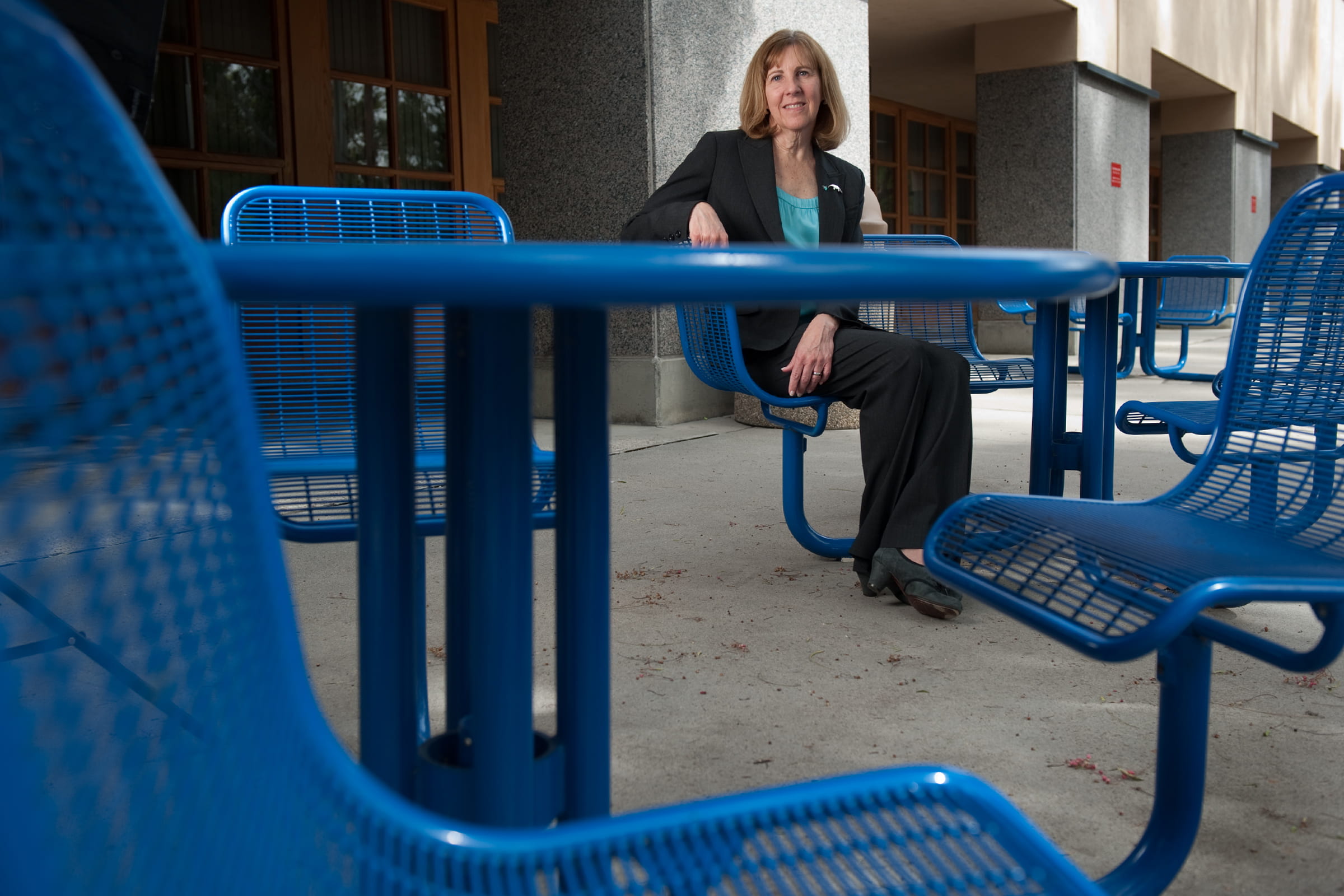Marking their territory

Anyone who frequents a Starbucks at UC Irvine has seen them: customers who camp out at coveted tables. They mark their territory with papers, backpacks, computers and coffee cups. They wear ear buds to discourage conversation and toss their jackets over empty chairs to keep interlopers from invading their space. Some hunker down with their laptops for hours, long after their last drop of latte.
“They’ll even leave their stuff on the table and chairs while they go to the restroom,” marvels Mary Gilly, marketing professor at UCI’s Paul Merage School of Business. “It’s amazing how many will leave their phones and computers unattended to save their spot.”
She observed this adult version of “dibs” in coffeeshops while she and a colleague researched a phenomenon called territoriality, one of many consumer behavior studies she’s conducted during her 30 years at UCI.
Gilly is especially interested in the indirect and unintended results of marketing, and service establishments such as Starbucks and Peet’s offer prime examples, she says. Their desire to lure customers with an inviting, homey environment has, for many, worked too well. Now they’re having trouble getting people to leave.
“When Howard Schultz reconceived Starbucks, he patterned it after Italian coffeehouses,” Gilly says. “The concept was that Starbucks would be a community living room, a ‘third place.’ The first place is your home, the second is your workplace, and the third is the neighborhood bar or coffeeshop where everyone chats and mingles. But that’s not what Starbucks got. Consumers turned it into something different.
“The coffeehouse has become a place where they’re alone together.”
Gilly and Merlyn Griffiths, Ph.D. ’07 began the territoriality study about five years ago, while Griffiths was a doctoral student. They interviewed customers in Starbucks outlets, Alta Coffee in Newport Beach and other quick-service establishments and observed how they staked their claim to a table.
Their study, to be published in the May 2012 issue of the Journal of Service Research, found that consumer attitudes toward territorial rights varied greatly. One group felt they “rented” shop/store/floor space only while consuming purchased items — “which is what I subscribe to,” Gilly says. Some believed that buying something meant they could linger for an unlimited amount of time. Still others thought they could hang out without purchasing anything at all.
“One girl argued that having the Starbucks’ logo on her travel mug entitled her to stay as long as she wanted,” Gilly notes.
Technology has contributed to the problem of customers commandeering tables for hours. Armed with their mobile devices, people can set up shop anywhere with Internet access.
“The coffeehouse becomes an office away from the office, especially for telecommuters and the unemployed,” Gilly says.
Such loitering can hurt the bottom line. Gilly and Griffiths saw potential customers leave without making a purchase because the tables were all occupied by people buried in books and computers. Squabbles broke out among those vying for limited or premium (near electrical outlets) space.
“In some instances, an intruder will do annoying things to make the already seated person run off — like coughing and sneezing,” Gilly says. “Some people will ask if another customer minds if they sit at their table. Occasionally, such customers will lie and say they’re expecting a friend, and the other person will keep watch to see if a friend shows up.”
Not only can territoriality cost the establishments sales, it can be a headache for employees who get caught in the middle of such conflicts.
“It’s an uncomfortable place for them to be,” Gilly says. “Management needs to make a clear policy — either customers can stay as long as they want or you place time limits.”
She first became interested in consumer behavior as a child. When her father, an attorney, was unhappy with a product or service, he’d fire off a letter of complaint. (It didn’t hurt that he wrote his missives on his official letterhead.) Once he wrote to Sara Lee to complain that the company had cut back on the pecans in its coffee cake.
“Sara Lee sent a representative to our house,” Gilly recalls. “Perhaps it was our imagination, but later we noticed the coffee cake had more pecans. We felt we had an impact.”
She’s studied all kinds of consumer-related issues, including complaints, online shopping habits, the impact of the Internet on seniors, and the effects of advertising on employees. She’s done fieldwork in hospitals, senior centers, small retailers, restaurants, high-tech firms and even hookah lounges. (She was gauging young people’s attitudes about smoking the sweetened tobacco.)
“My research has taken me to some really interesting places,” Gilly says.
She often collaborates with her students, whose inquiries have led to full-blown research projects. In 2011, she received the American Marketing Association Foundation’s Williams-Qualls-Spratlen Multicultural Mentoring Award of Excellence.
“To classify Mary as a mentor is far too simplistic,” Griffiths notes. “She is more guru, as she far exceeds what is expected of a leader, guide and counselor.”
Gilly says her work has taught her to never underestimate consumers.
“Some people think marketing makes people buy things, but I see consumers as pretty powerful,” she says. “They will do what they want to do. They have free will. And they can go in unexpected ways, as in the case of coffeehouses. Those in marketing have to accommodate them. They’re a feisty bunch.”
Originally published in ZotZine Vol. 4, Iss. 8